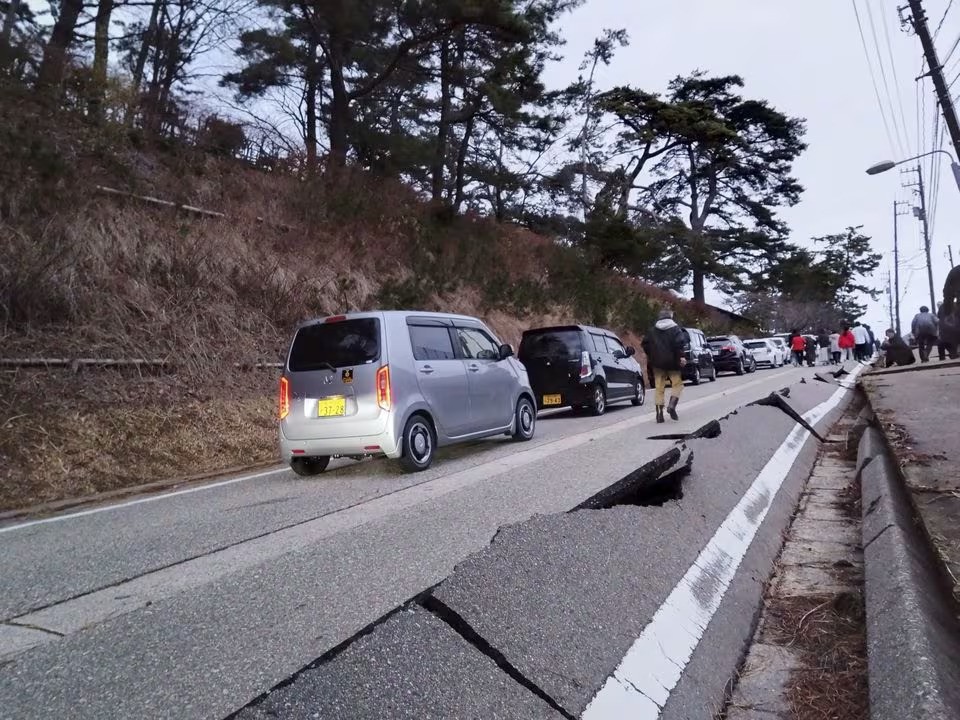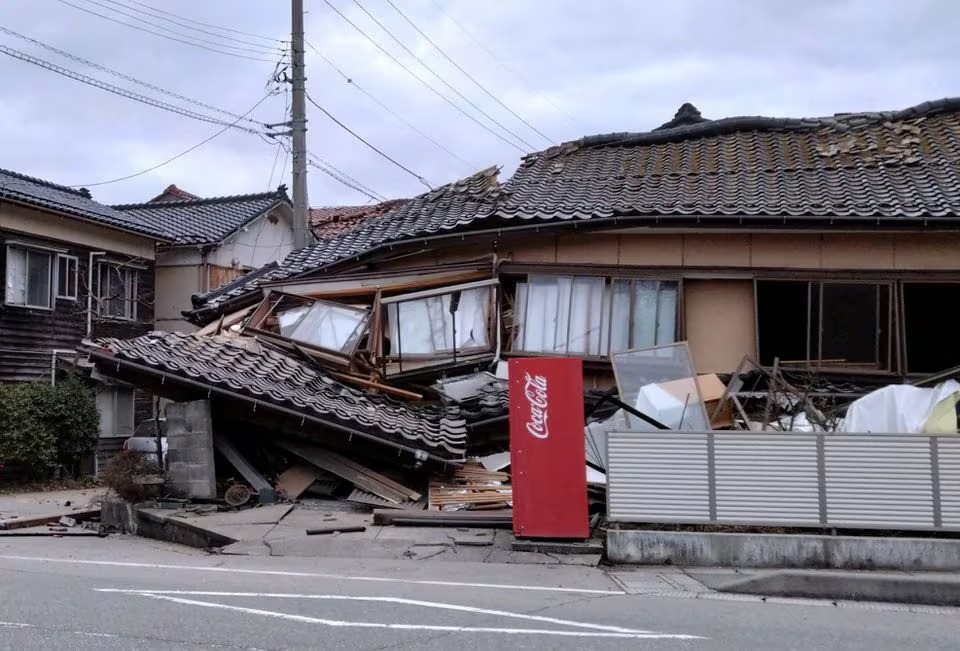Japan Rocked By Powerful Earthquake, Prompting Tsunami Warnings
Japan rocked by powerful earthquake, prompting tsunami warnings, claiming at least one life, demolishing structures, causing widespread power outages, and forcing coastal residents to seek refuge on higher ground.
Author:Hajra ShannonReviewer:Paula M. GrahamJan 02, 2024195 Shares21.6K Views

Japan rocked by powerful earthquake, prompting tsunami warnings, claiming at least one life, demolishing structures, causing widespread power outages, and forcing coastal residents to seek refuge on higher ground. The seismic event, registering a preliminary magnitude of 7.6, generated approximately 1-meter waves along Japan's western coastline and in nearby South Korea.
The Japan Meteorological Agency (JMA) initially issued a significant tsunami warning, the first since the tragic March 2011 earthquake and tsunami that resulted in the loss of nearly 20,000 lives in northeast Japan, specifically targeting Ishikawa prefecture.
However, the JMA later downgraded the warning and eventually reduced it to an advisory. The U.S. Geological Survey reported that the recent earthquake in central Japan was the most powerful in the region in over four decades.
According to government spokesperson Yoshimasa Hayashi during a press briefing, the effects of the earthquake caused house destruction, fire outbreaks, and the deployment of army personnel to assist in rescue operations.
According to local police and broadcaster NTV, an elderly man tragically lost his life when a building collapsed in Shika Town, Ishikawa. Media coverage from the prefecture captured the dramatic moments of the earthquake, featuring a building collapsing in a cloud of dust in the city of Suzu and a substantial crack appearing in a road in Wajima, where anxious parents tightly held their children.
A witness shared footage on the social media platform X, showcasing the Keta Grand Shrine near the coast in Hakui swaying during the quake, while a concerned crowd of visitors observed. The witness exclaimed, "It's swaying. This is scary!"
On January 1, there is a tradition for millions of Japanese that involves visiting shrines and temples to celebrate the beginning of the new year. In the nearby city of Kanazawa, renowned for its tourism, pictures revealed the aftermath of the earthquake with the shattered remains of a stone gate scattered at the entrance of a shrine, while concerned worshippers observed the scene. The seismic activity extended to the mountains of the adjacent Nagano prefecture, where the tremors were also felt.
"The snow from the electric wire (came) down, and also from the roof it fell down and all the cars are shaking, and so everybody was panicked," Jonny Wu, a Taiwanese tourist visiting Nagano for a skiing holiday, said.
The Japan Meteorological Agency (JMA) official, Toshihiro Shimoyama, warned that additional powerful earthquakes could occur in the region over the next few days, as seismic activity has been building up for over three years. Both Russia and North Korea issued tsunami warnings for specific areas.
Responding to the heightened risk, the Japanese government announced that as of Monday night, over 97,000 people in nine prefectures along the western coast of Honshu, Japan's main island, were ordered to evacuate. Evacuees were directed to spend the night in sports halls and school gymnasiums, commonly designated as emergency evacuation centers.
Ayako Daikai, a resident of Kanazawa, shared that she, along with her husband and two children, evacuated to a nearby elementary school shortly after the earthquake. The school's classrooms, stairwells, hallways, and gymnasium were filled with evacuees seeking refuge. "We haven't decided when to return home yet," she said.
Nuclear Plants
Late on Monday, Japanese Prime Minister Fumio Kishida informed reporters that he had directed search and rescue teams to make every effort to save lives, despite facing challenges accessing areas affected by the earthquake due to blocked roads.
In response to the disaster, the Imperial Household Agency announced the cancellation of Emperor Naruhito and Empress Masako's scheduled New Year appearance on Tuesday.
The timing of the earthquake is particularly delicate for Japan's nuclear industry, which has encountered strong opposition from some locals since the 2011 earthquake and tsunami that resulted in nuclear meltdowns in Fukushima, devastating entire towns. Last week, Japan lifted the operational banon the world's largest nuclear plant, Kashiwazaki-Kariwa, since the 2011 tsunami.
The Nuclear Regulation Authority confirmed no irregularities at nuclear plants along the Sea of Japan, including the five active reactors at Kansai Electric Power's Ohi and Takahama plants in Fukui Prefecture. Hokuriku's Shika plant in Ishikawa, the closest nuclear power station to the epicenter, had already shut down its two reactors for regular inspections before the quake, and the agency reported no impact from the seismic activity.
Tsunami Reports
After the earthquake, a vivid yellow message proclaiming "Tsunami! Evacuate!" flashed across television screens, urging residents in specific coastal areas to evacuate immediately. Wajima, a town of approximately 30,000 renowned for its lacquerware, reported at least 30 collapsed buildings, with several structures engulfed in flames.
The seismic activity also shook buildings in the capital, Tokyo, situated 500 km away on the opposite coast from Wajima. As of late Monday, nearly 32,000 households in Ishikawa prefecture remained without power, according to the utility provider Hokuriku Electric Power, with temperatures expected to drop to near freezing overnight in some regions.
Tohoku Electric Power reported 700 households still without power in the neighboring Niigata prefecture. Late on Monday, West Japan Railway disclosed that approximately 1,400 passengers were stranded on four halted bullet train services between Kanazawa and Toyama cities.
As stated by transport authorities, one of Ishikawa's airports had to shut down due to cracks that appeared on the runway. In response to the earthquake, Japanese airline ANA redirected planes bound for airports in Toyama and Ishikawa, while Japan Airlines canceled most services to the Niigata and Ishikawa regions.

Hajra Shannon
Author

Paula M. Graham
Reviewer
Latest Articles
Popular Articles
